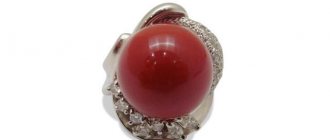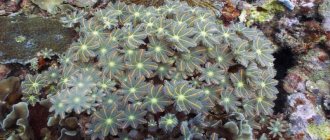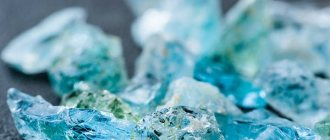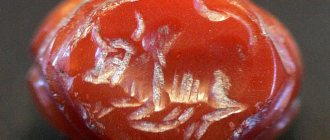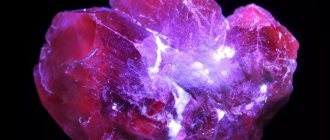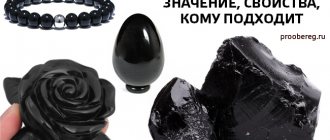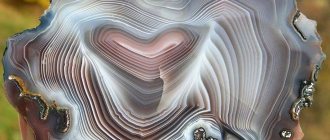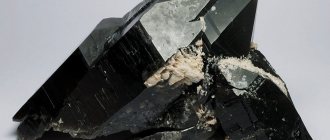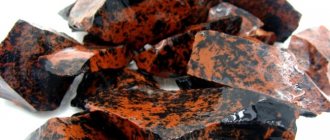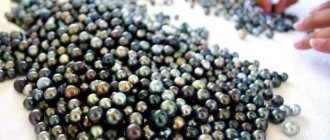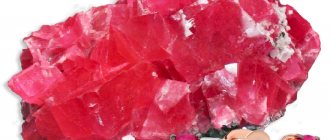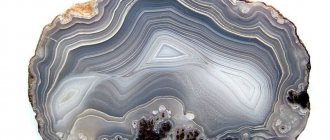13.09.2017
Regular readers of our blog are already aware of how coral is mined, what jewelry is made from it, and how best to care for it. In this article we offer more detailed information about options for imitation of natural material and methods that allow you to identify fake coral in everyday conditions.
The demand for jewelry made from this mineral is high, and so is the price—one bead, depending on the quality, can cost up to $50. Hence the desire of unscrupulous manufacturers and sellers to falsify goods. Our tips will help you avoid unnecessary expenses, even if the label does not reflect the artificial origin of the jewelry.
History of coral
The name "coral" has German and Polish roots, which in turn go back to ancient Greek origins.
They have been known to man for quite a long time. In Ancient Greece, pink corals were considered a source of immortality and happiness. And in Europe in the Middle Ages, corals symbolized modesty and purity. It was believed that they add wisdom and intelligence, develop logic and intuition, and enhance memory. Talismans with corals were used to protect against various troubles, in difficult situations, and also to protect oneself from evil forces.
Today, corals remain popular in jewelry and decorative items. Corals are found both in tropical seas and oceans and in the cold Atlantic Ocean. To date, scientists have described such varieties of corals as fan-shaped and tree-shaped, as well as subspecies of different color characteristics.
What stones does it go with?
The compatibility of natural stones is a controversial issue, since the properties of some may suppress others. Many esotericists recommend wearing stones separately from each other so as not to take risks. But coral has proven pairs that do not harm it energetically:
- pearl;
- amethyst;
- turquoise.
This stone is perfectly complemented by agate, about which there is already an article on our website. It is best to choose a pair for coral by color. It is important that it is contrasting.
Not compatible with the properties of this sea stone:
- malachite;
- jasper;
- sardonyx.
If you buy jewelry with different gems, try to find out about their properties in advance so as not to harm yourself.
The magical properties of coral
Coral amulets attract good luck to their owner, endow him with the gift of foresight, and have a good effect on mental state and logical thinking. They are believed to protect against the evil eye and lightning.
In addition, corals are an excellent remedy for fatigue and for increasing vitality. They relieve tension, apprehensions, fears, depression, and give prudence. The positive effect of coral on the psyche is reflected in the neutralization of such negative states as anger and envy.
Coral amulets are considered the best protectors against bad people, and they are often given to children. Coral also protects travelers from hurricanes and storms, and helps them return home safely.
Who is suitable according to their zodiac sign?
From an astrological point of view, this is a unique stone, since it simultaneously belongs to three elements: Water, Earth and Fire. But it is best suited for those people who were born under the constellation Pisces , Cancer and Scorpio .
Red varieties are ideal for Pisces. They will improve the health of these people and attract good luck. Sea stone will make them more self-confident, bolder, and teach them to express emotions. Cancer is more suited to pink and white types of corals. They will protect people born under this sign from the negativity and anger of others. Scorpios favor brown, red-brown varieties; they make the character of this sign softer.
In addition to water signs, coral successfully combines with the earthly Capricorn and the representative of the fire element - Sagittarius.
The properties of coral are not suitable only for Virgos . The other constellations do not conflict with the energy of this stone, but they also receive less benefit from it than others.
The healing properties of coral
The healing qualities of coral are associated with its composition, which is represented by a large amount of calcium and many important trace elements, such as iodine.
Coral powder has long been used in folk medicine to restore the skeletal system and treat thyroid diseases.
Preparations based on corals increase tone, improve memory, and support the cardiovascular and nervous systems. With their help, diseases of the liver, intestines, and stomach ulcers are treated. In addition, they relieve headaches, gout attacks and sore throats.
Care tips to maintain properties
Corals are fragile and soft, so they should be handled with care. Protect them from impacts, aggressive substances, and do not leave them in places exposed to sunlight. I also advise you to put on the jewelry only after using perfume, and not vice versa, so that the perfumed solution does not get on the stone.
The product should be stored in a closed box, wrapped in soft cloth or paper. To wash the talisman, use clean water or a damp cloth. By the way, it is best to clean it during the full moon, when wearing corals on the body is not recommended.
Jewelry must be removed at night and breaks from being worn so that the energy in the stone is preserved.
Branches of application of coral
The coral “tree” basically contains a stump with branches. Not all of them are suitable for jewelry making, as they can be thin and dense. The processing of suitable parts of coral is done in an oval, ball or cabochon.
In the past, talismans and amulets made from coral were very popular. Later, beads, rings, earrings, necklaces, tiaras and other products based on them came into fashion. At the same time, red corals were considered the most popular. In countries such as Ukraine and Poland, coral beads were a mandatory attribute of women's costumes, by which one could judge the financial situation of the family.
The hard skeletons of corals are used as raw materials for the production of lime. In jewelry today, black, white and silver-pearl corals are considered the most valuable, although red and pink still remain popular colors for them. In addition, corals are used in medicine and cosmetology.
Coral for men, women and children
The stone is suitable for both men and women. When choosing, I advise you to focus on color.
For girls, light shades are preferred. They are perfect for those who have a strong, strict character. The stone will make him softer and more feminine, but will not deprive him of self-sufficiency and confidence.
If a woman is sentimental and vulnerable, jewelry with rich red coral will suit her better. Under the influence of such a talisman, she will become less susceptible to the not always important opinions of others.
Men should choose dark shades: red, black, brown. The stone gives the stronger sex masculinity, courage, and also imparts charisma that attracts ladies.
The stone is absolutely safe for children. It can be hidden in a crib or kept in the room on a shelf from the first days of the baby’s life. The soft energy of coral protects sleep and protects against diseases. White and light varieties are preferred.
How to distinguish real coral from a fake
The simplest option for imitation coral is plastic products in red or orange shades. When you touch them with a hot needle, a black dot and the smell of burnt plastic appear, which distinguishes them from natural corals.
Synthetic pressed coral, tinted in various colors, is distinguished by its lighter weight and the effervescence of the sample when it reacts with hydrochloric acid.
Dye-dyed white corals leave traces of dye in the water when immersed in hot water. In hot weather, they can even stain the skin.
In addition, fake coral is made from rose quartzite. They differ to the touch: quartzite is a cold stone, while coral resembles amber. When cut, quartzite has a grayish, stony texture, while coral has a shiny texture.
Color palette
Just imagine: there are about 6 thousand species of corals in nature! The color palette is no less diverse, as there are approximately 350 shades of this stone. For ease of classification, several color groups are distinguished:
- White, called “bianco” in Italian. The poetic name “angel skin” is also known. They have a pearlescent or silvery shimmer.
- Blue or blue, the rarest and most valuable, and therefore the most expensive. Also called "akori".
- Black corals are mined in India and the Red Sea and sold under the name “acobar”. Listed in the Red Book. Only what washed ashore is used for decorations.
- Reds are the largest group, which includes dozens of shades of scarlet, pink and orange.
The shade is formed under the influence of organic and inorganic impurities. Black specimens consist only of organic matter.
How to wear?
Corals are soft minerals, so they are not suitable for daily wear. Jewelry is worn on special occasions.
It is believed that wearing stones allows you to get rid of depressive thoughts, so it is recommended to wear beads and earrings in moments of despondency to raise the spirit of life.
Master jewelers try to preserve the natural beauty, the original shape of sea polyps, so jewelry often has a fantasy shape that requires a certain mood and clothing.
How to care?
Coral stone has low strength and is fragile, so it is important to protect it from rough interference. It is important to prevent falls and impacts on coral products; corals should not be placed in water for a long time.
Although polyps spent most of their lives in water, the composition of the liquid in their natural habitats and in the water supply is different: chlorine and other reagents can destroy the stone.
Care involves following the following rules:
- Products should be stored carefully wrapped in a soft cloth, away from hard stones and metals.
- Do not use household chemicals, alcohol, vinegar, or citric acid for cleaning. Aggressive agents damage the structure of minerals.
- Clean with a soft cloth and a weak solution of soap in boiled water.
Important! Before taking a bath, shower, or washing dishes, you need to remove coral jewelry to maintain an attractive appearance.
From Paleolithic to Sea Gypsies
Coral was one of the oldest materials to fall into human hands. In the Paleolithic site in the Wildscheier Cave (in Germany), archaeologists found beads made of pink coral. Even then it was used as a jewelry stone.
The ancient Egyptians knew the stone since “pre-Egyptian” times - archaeologists confirm that it was already known to people of the so-called Badari culture (about 7,000 thousand years ago). The gift of the sea has been used by people as a jewelry material throughout its long history (Pliny the Elder mentioned a “coral saleswoman” who lived in Egypt at the end of the 3rd century BC).
The export of Egyptian corals to Europe brought good income to Genoese merchants.
Expert opinion
Semenishcheva Polina
Specialist in mineralogy. Graduated from St. Petersburg Mining University.
Please note : the export of corals and other marine organisms from modern Egypt is strictly prohibited. Fine from $1000 or prison up to three months.
Coral beads were also valued by barbarians; Thus, in a burial ground from the time of migration of peoples near modern Novorossiysk, more than three hundred coral beads were found in three burials.
Nowadays, among the islands of Southeast Asia there live “sea gypsies” - the Badjaos, who come ashore only to sell the corals they harvest and buy goods from the land with them. Or bury the dead.
Name from the Greeks
The word has been known since ancient times: even in ancient Greek it was called κοράλλιον or κουράλιον. And the Greeks also had a female name Corallion - so modern Coral, Coralie and Coraline (but not Charles and Caroline) have ancient namesakes.
Interesting Facts
A curious 17th-century coral amulet is on display in the Munich Residence Treasury. Made in the form of a hand, where the fingers are folded into a “three-finger figure”. The one that is also called fig, fig. This figure in some countries was used to protect against evil spirits. But residents of Arab countries and Southeast Asian countries will be terribly offended by this figure.
Corals, like trees, have annual rings that can be used to determine their age.
The old Russian name for coral processed into a ball is korolek.
Physico-chemical characteristics
Many people are interested in what corals look like. They are essentially calcium carbonate. It is an inorganic compound with the chemical formula Ca(CO)3. In addition, the composition contains manganese and magnesium. The gems also contain iron and calcite. Coral is not a gemstone. The gem belongs to semi-precious or ornamental gems.
The shade of the mineral and the properties of the coral depend on the composition of the impurities:
- opaque structure;
- density – 1.3-2.6 g/cm3;
- lack of a specific form;
- glassy or waxy shine after processing;
- splinter fracture;
- hardness on the Mohs scale – 3.5-4 points;
- presence of pores and inclusion;
- decomposition under the influence of acids and elevated temperatures.
Coral - what kind of plant, animal, stone?
The history of corals is amazing, because they cannot be classified as classic fossil gems, although they are considered stones.
A real miracle of nature is that minerals are formed from the remains of marine invertebrate animals - coral polyps. The lime content in the skeleton allows it to be well preserved in salt water conditions.
Interesting! The skeletons of coral polyps form reefs and entire islands.
A classic example is the Maldives archipelago. Corals grow very slowly, the annual growth is only 1 cm. Moreover, the age of many marine animals can reach 100 years or more.
An unusual feature of the skeleton of coral polyps is the growth rings, which help determine age.
Feeding
Most corals obtain their energy and nutrients from single-celled photosynthetic organisms that live in symbiosis with polyps in their tissue. Although some corals are capable of catching and feeding on plankton and sometimes small fish. Such organisms are carnivorous; in addition to fish, their diet also includes small marine animals. The polyp's tentacles immobilize or kill prey using their nematocysts. These cells carry a poison that is quickly released in response to contact with another organism.
Classification of corals according to their origin
In my store there are products made from different types of coral. To the untrained eye, all corals are the same and differ only in color. But I assure you, this is not so. The world classification of corals is based on the geography of their growth and color differences. There are about 350 shades of corals alone.
I'll start with the most significant, Mediterranean corals .
Coral mining in the Mediterranean Sea covers Italy, Greece, Spain, France, and Morocco. This type of coral was the most sought after in the 19th century and has a common name - Rubrum coral ( Corallium Rubrum ). The color of this coral species is generally a uniform red, with shades ranging from dark to bright red. It is very rare to find a pale pink color. Coral bushes are small in size, averaging 20-25 cm in height and 10-15 cm in width and have the shape of a tree. The thickness of the branches varies from 1 to 15 mm. It is mined at a depth of 50-150 m. Coral Rubrum, due to its characteristics, is best suited for products with a smooth surface - cabochons, beads, drops, etc.
In Italy there is another type of coral - Sciacca corals . I won’t repeat myself; I already wrote about them on my blog.
Japanese corals.
At the turn of the 19th and 20th centuries, Japanese corals already made up a significant part of Italy's imports. Due to its softer structure, this type of coral was more suitable for cutting. Italian carvers made cameos, which were used as inserts for bracelets, brooches, pendants, and earrings. In the past, they were often used to decorate boxes and dishes. The small Italian town of Torre del Greco, located near Naples, has traditionally been considered the world center for coral processing for more than 200 years.
Japanese corals are divided into several subspecies, the scientific names of which are Corallium Elatius , Corallium Japonicum , Corallium Secundum , Corallium Kanojoi .
The main colors and shades of Japanese corals are white (shiro), pinkish-white; pale pink “angel skin” (Bokè); bright red “cerasuolo” (momo); dark red "moro" (aka). Japanese corals are mined at a depth of more than 200 m and have a fan shape. The average height of the bushes is 40 cm, with the exception of Cerasuolo coral, which can reach one meter.
Corallium Elatius , the scientific name of a subspecies of Japanese coral, depending on the color, can be called Satsuma (Momo, Cerasuolo, etc.), Bokè (Pelle d'angelo, etc.), and Miss (or Misu).
Satsuma corals range in color from bright pink to bright red. The color of the coral bush can vary from red at the base to white at the top. A distinctive feature of this subspecies of coral is the presence of a white core that crosses the entire coral and is called the soul of the coral. Often it is this feature that allows this type of coral to be classified. Satsuma coral is quite elastic, which makes it suitable for engraving and sculpture. All figurines, as a rule, are made from this coral.
Bokè (Pelle d'angelo it., Angel Skin rus. ) has the same structure and the same characteristics as Satsuma coral, and also has a light center. When processing the masters, to the extent possible, mask the “Soul”. The more uniform the color, the more expensive the product is. A uniform soft pink color, without white inclusions, is rare in nature. Its prices are astronomical; such coral is used exclusively in high-end products. It is only when the coral is a soft pink, rich in color, smooth and free of blemishes, that we come across a specimen that can boast of bearing the name “Angel Skin”. Very often other types of Japanese corals are passed off as it. It is mined in the seas near Japan at a depth of 200-300 m.
Corallium elatius is the scientific name for Miss (or Misu) corals . Biologists cannot yet say with certainty that the Miss (or Misu) coral species belongs to the elatius species. This is a completely new species of coral, which was only discovered in 1976. Miss corals are fished between the Philippines and Taiwan at depths of 250 to 400 meters. The bushes of this coral have a fan shape with flattened branches of medium size: height 25-30 cm, width 30 cm, diameter 10-15 mm. The color is pinkish-white or pale pink, tending towards violet. This particular coral is often passed off as “Angel Skin” coral.
Corallium Iaponicum is the scientific name of a subspecies of Moro coral (Aka, Sangue di bue, it.). Moro corals are caught in the Sea of Japan at a depth of about 200-300 meters. In Japanese, Aka means red. The bushes of this coral are very branched and have dimensions: height 30 cm, width 25 cm, diameter 2 cm. The color varies from bright red to dark red. The skeleton of the coral is red with a white core, which, unfortunately, is often visible on the surface of the coral. Extremely glassy, with a lot of defects in the form of spots and cavities. But if a craftsman manages to make a product from this coral without flaws, it is a unique beauty. This is one of the reddest (and most expensive) corals. It is very difficult to get a necklace with beads of the same color. When this happens, we are faced with a masterpiece! Together with Boke and Magai corals, Aka coral is one of the highest quality varieties of corals and is quite expensive.
Corallium Secundum is the scientific name for a subspecies of Midway coral . This relatively new species of coral was discovered in the 60s near the Midway Archipelago (hence the name of this coral), at a depth of about 300-500 m, Japanese fishermen found enough coral for commercial exploitation. Coral bushes have the shape of a fan, the average dimensions are height 20-25 cm, width 20 cm, diameter 10-15 mm. Its color is white or pinkish, with small veins or dots of red. Corals of intense red or pink color are rare.
Corallium konojoi is the scientific name for white corals. The peculiarity of white coral is that the skeleton of this coral is white, but sometimes it is found with stripes of soft pink color.
The coral bushes are slightly branched and have the following dimensions: height 25 cm, width 20 cm, diameter 20-30 mm. Recently, colonies of white coral, which were considered a species that had disappeared from the Mediterranean Sea, were found at a depth of 650 m off the coast of Italy near the town of Santa Maria di Luca.
Deep Sea or New Coral
Deep Sea corals were discovered in 1979 in Hawaii at a depth of 800 to 2000 m, hence their name - Deep Sea, which means deep sea, deep sea. The bushes of this coral are fan-shaped with flattened branches and, as a rule, with parallel trunks. The average dimensions are: height 50-70 cm, width 30-50 cm, diameter 10-15 mm. The color of coral is pink with all shades, from pale pink to light red.
An interesting feature of this variety of coral is that the intensity of the color of the coral is inversely proportional to the size of the branches, that is, the thinner and smaller the branches, the richer the red color of the coral. The coral is very glassy and cracks are often present.
There are also black, gold, and blue corals. In the last decade, attempts have been made to replace natural corals with the coralloid Bamba. I will return to this topic in the next publication.
Thank you for watching!
Jewelry
Jewelers do not have much love for coral due to its high fragility and susceptibility to the negative effects of sunlight, high temperatures and chemicals. Processing is also hampered by the fragile structure.
Corals are set in silver, less often in non-precious alloys for jewelry.
A silver ring with a small insert has a price of around $50. One carat of high-quality mineral will cost 25-50 dollars.
You can also purchase cheap jewelry such as bracelets, pendants, beads or earrings made from unprocessed or roughly polished pieces. Such products are most often sold in numerous souvenir shops on the coasts of the seas, where the source material is mined.
